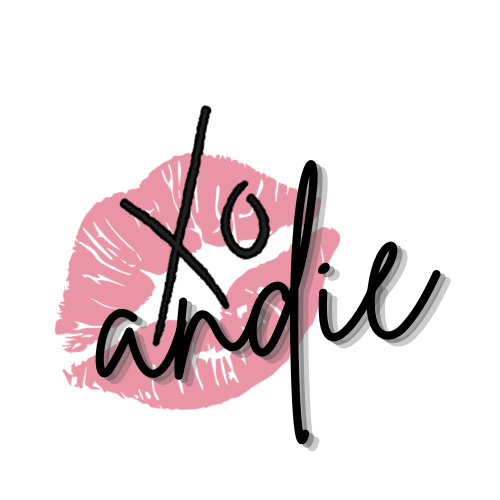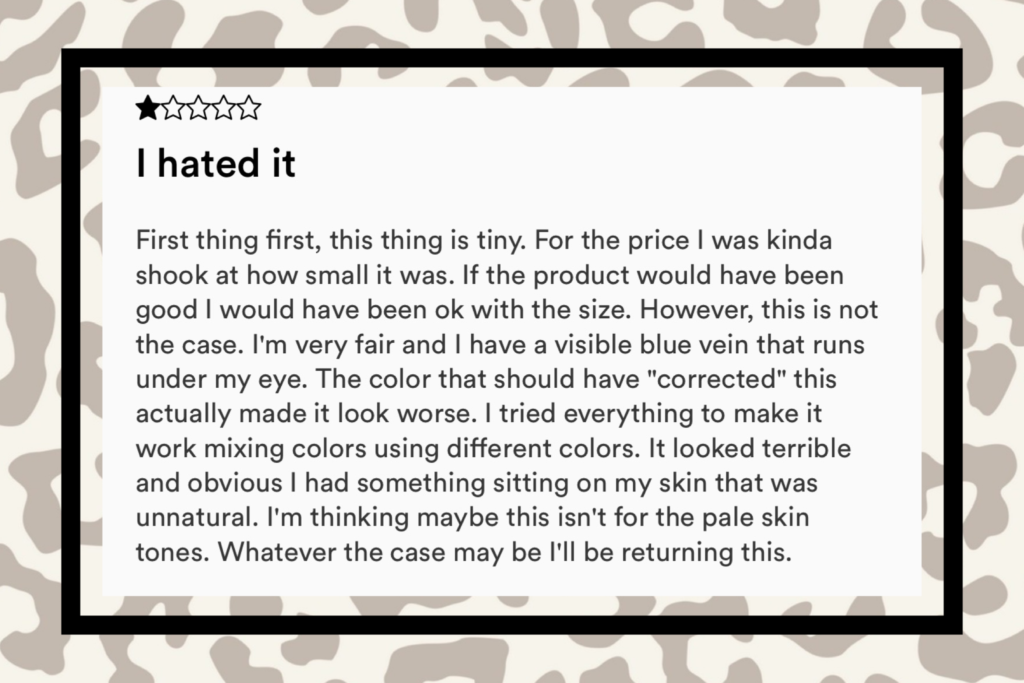What Is It?
Stila: Correct and Perfect All-in-One Color Correcting Palette
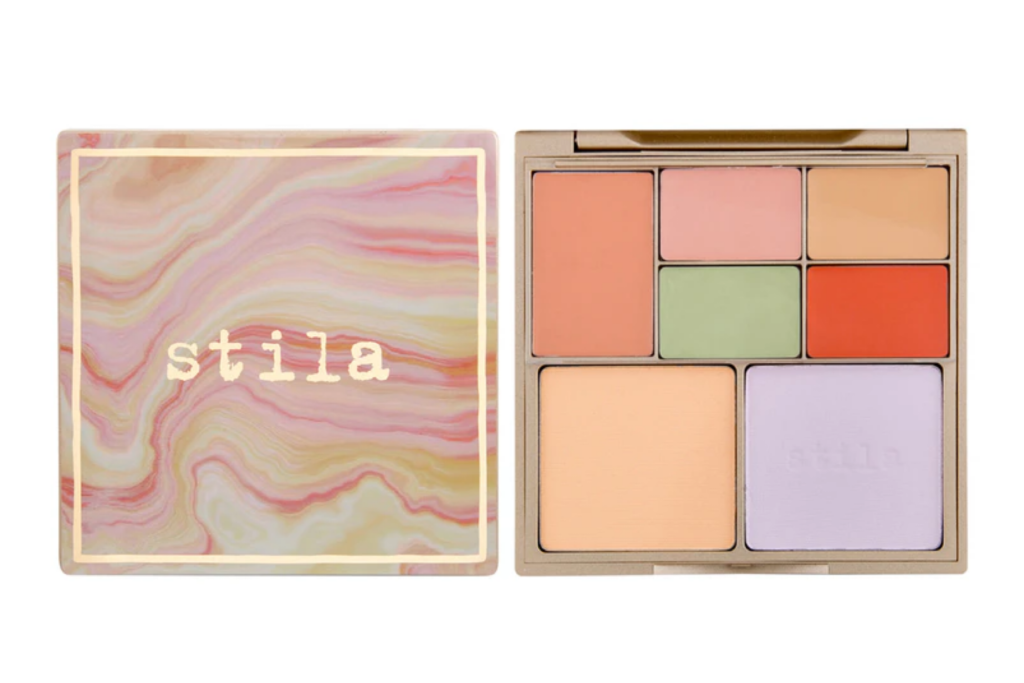
Naturally, for my first blog post, I thought it fitting to write about my favorite beauty product. What is this product, you ask? Without reservation, my favorite beauty product is this Stila Color Correcting Palette. It’s a small makeup palette (as far as palettes go), with five color-correcting creams and two setting powders. If you struggle with skin concerns, you have met your new best friend. This palette is great for everyone, regardless of skin type or shade! Click here to view and/or purchase the product on Stila’s website.
The Stila Color Correcting Palette Contains:
- 2 x 0.123 oz Pressed Finishing Powder in Yellow and Lavender
- 0.070 oz Cream Corrector in Peach Cream
- 4 x 0.035 oz Cream Corrector in Pink Cream, Green Cream, Yellow Cream, and Orange Cream
Introduction
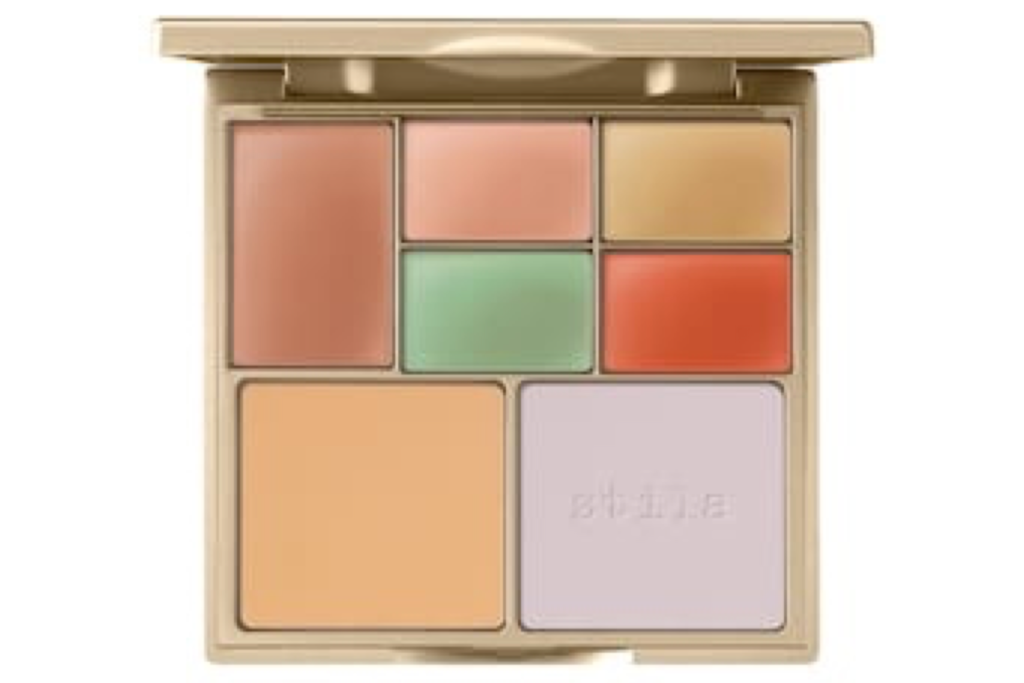
When it comes to beauty products, we all have our favorites. You might think it impossible for a beauty buff like me to pinpoint my favorite product of all time, but you’d be wrong. As mentioned before, my all-time favorite beauty product is the Stila Correct and Perfect All-in-One Color Correcting Palette. It’s my holy grail of beauty products, and I am excited to share why that is with you!
Why the Stila Color Correcting Palette Has Earned Its Spot as My Favorite Product
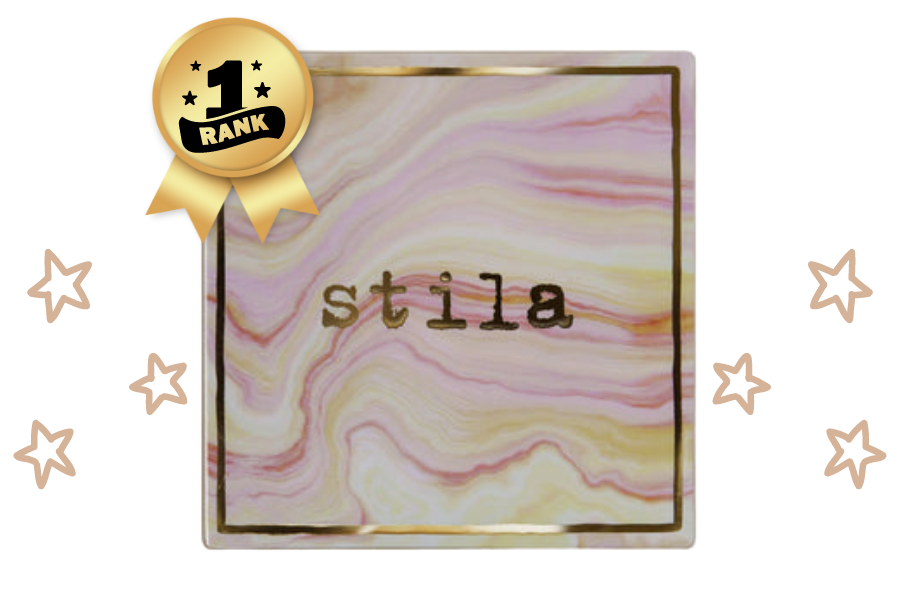
The Stila Correct + Perfect All-in-One Color Correcting Palette is an amazing tool that addresses dark circles, redness, dullness, discoloration, and more. With five different shades, it offers a solution for every skin imperfection. Moreover, the creamy formula blends effortlessly into the skin. As a result, it provides buildable coverage that looks natural and flawless. One of the things I love most about this palette is its versatility. Whether dealing with dark circles or a pesky blemish, this product has me covered! I can easily mix and match the shades to create a custom color corrector that suits all of my needs. From there, the rest of my makeup routine is a breeze!
How the Stila Color Correcting Palette Works
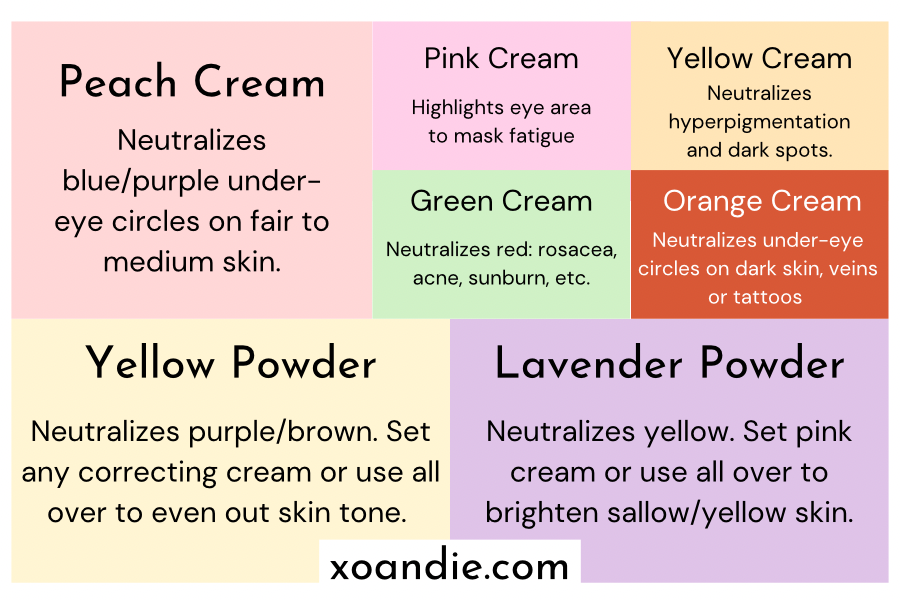
This product brilliantly utilizes the principles of color theory to neutralize and balance out discoloration. As shown above, each shade targets a specific concern:
The Green Shade: counteracts redness, making it ideal for covering up blemishes or rosacea.
The Peach Shade: brightens dark under-eye circles and helps to conceal hyperpigmentation.
The Yellow shade cancels out purple or blue tones, perfect for hiding veins or bruises.
The Lavender Shade: counteracts sallowness and adds a subtle glow to the skin.
The Orange Shade: counteracts dark spots and helps to even out skin tone.
Apply the appropriate shade to the targeted area and thoroughly blend it out. As a result, you can achieve both a more even complexion and a flawless base for your makeup.
How to Use It
- Identify Your Skin Concerns: Identify the areas requiring correction, such as dark circles, redness, or hyperpigmentation. *Pro tip: Don’t worry if you need help with this step! Sephora offers a tool on their website or app that identifies your skin concerns and also recommends products tailored to your specific needs.
- Apply the Corrector: Use a small brush, a small sponge, or your fingertips to apply the appropriate cream corrector to the targeted areas. See below for a graphic made by yours truly that shows which areas of the face the creams work best!
- Blend: Gently blend the corrector into your skin using a makeup sponge or brush.
- Set with Powder: Either set it with the corresponding setting powders in the palette or any translucent powder.
My Custom Numbered Application Guide:
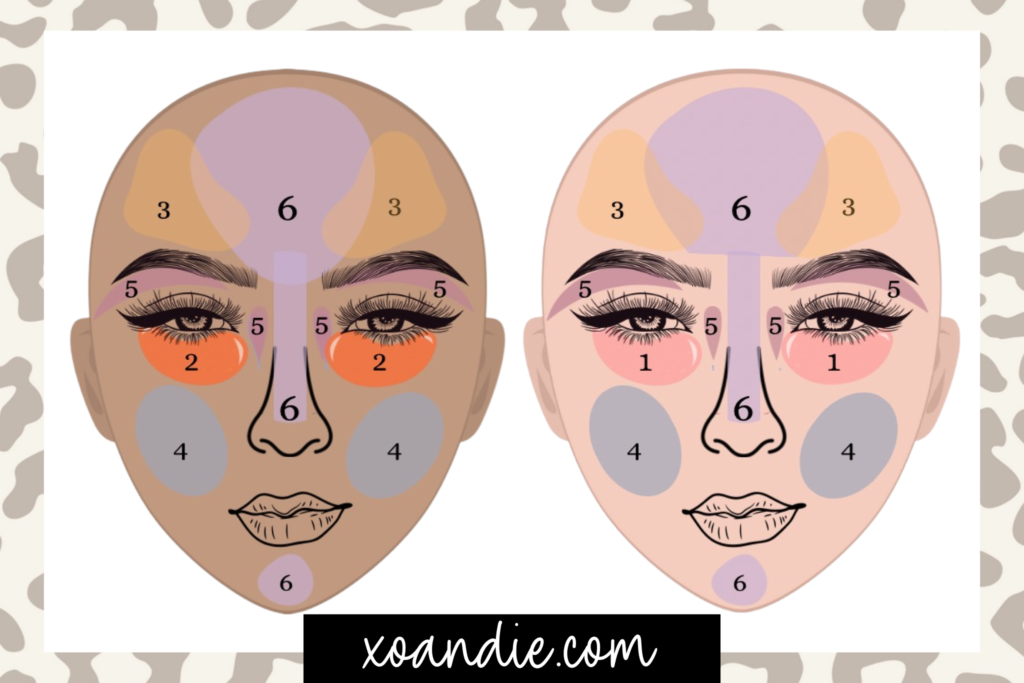
1: Peach Cream | Neutralizes blue/purple under-eye circles on fair to medium skin.
2: Orange Cream | Neutralizes hyperpigmentation and dark spots.
3: Yellow Cream | Neutralizes purple/brown. Set any correcting cream or use it all over to even out skin tone.
4: Green Cream | Neutralizes red: rosacea, acne, sunburn, etc.
5: Pink Cream | Highlights eye area to mask fatigue.
6: Lavender Powder | Neutralizes yellow, set pink cream, or use all over to brighten sallow/yellow skin.
7: Yellow Powder (Not on the graphic, as it works best all over)
Identifying Skin Concerns
Dark Circles:
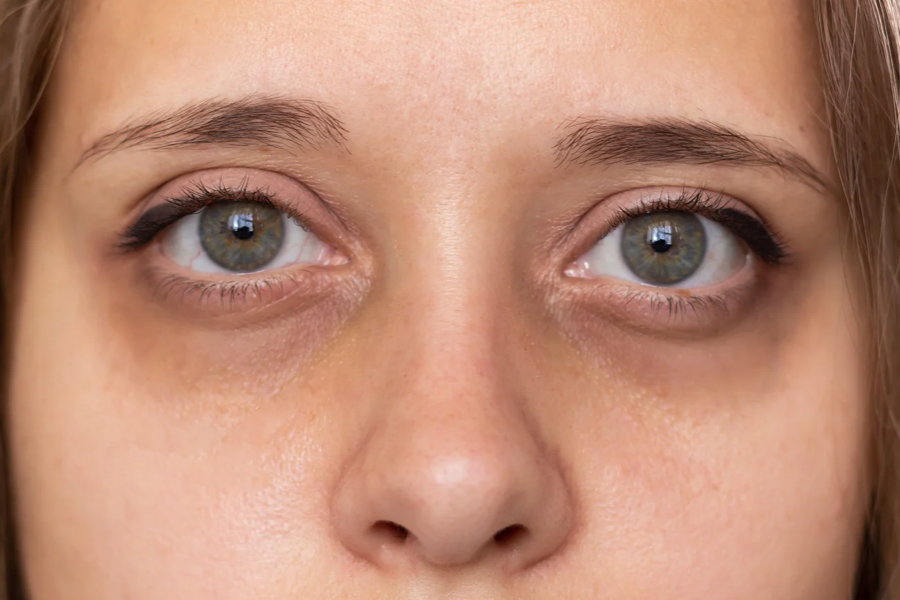
Dark circles refer to the darkened area of skin below the eyes. This area can appear in various shades such as blue, purple, brown, or black, depending on your skin tone. Dark circles can make you look tired or older than you are. However, they’re usually not a sign of a medical problem. Phew!
Use the Peach or Orange Cream (Depending on Your Skin Tone) to Neutralize Dark Circles:
To address dark circles with this product, you’ll want to use the peach or orange cream corrector. For fair to medium skin tones, the peach corrector is ideal for neutralizing dark under-eye circles. For medium to dark skin tones, the orange corrector works best. Apply a small amount of the corrector to the under-eye area using a brush, sponge, or your fingertips. Gently blend it into the skin until the dark circles are neutralized.
Facial Fatigue:
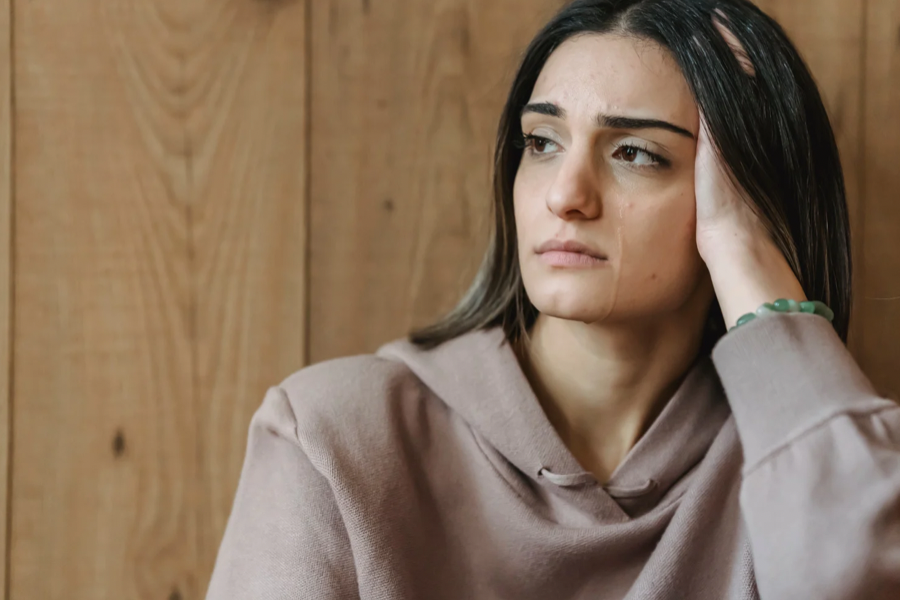
Signs of fatigue in the face can manifest in various ways, making you look tired and less vibrant. Here are some common indicators:
Common Signs of Facial Fatigue:
- Dark Circles: As covered above, the skin under the eyes can appear darker due to lack of sleep, dehydration, or poor circulation.
- Puffy Eyes: Fluid retention around the eyes can cause puffiness. This is often a result of a lack of sleep or excessive salt intake.
- Dull Skin: Fatigued skin often looks dull and lackluster because it doesn’t reflect light well. This can be due to hydration, poor circulation, or a buildup of dead skin cells.
- Fine Lines & Wrinkles: Lack of sleep and stress can lead to the formation of fine lines and wrinkles. These are particularly around the eyes and mouth.
- Large Pores: Fatigued skin may have enlarged pores due to a lack of proper skin care and hydration.
- Dryness: Persistent dryness can be a sign of fatigue, making the skin feel tight and uncomfortable.
- Paleness: The skin may appear pale or sallow due to poor blood circulation and lack of oxygenation.
Use the Pink Cream to Neutralize Facial Fatigue:
The pink cream in the Stila Color Correcting Palette can brighten and impart a healthy glow to your complexion. The pink cream is especially effective on lighter skin tones to combat dullness and provide a lively, alert look. When applied to areas such as the cheeks and beneath the eyes, it can rejuvenate your appearance and diminish signs of fatigue. As previously noted, the peach or orange cream is your go-to for dark circles caused by facial fatigue.
Hyperpigmentation:
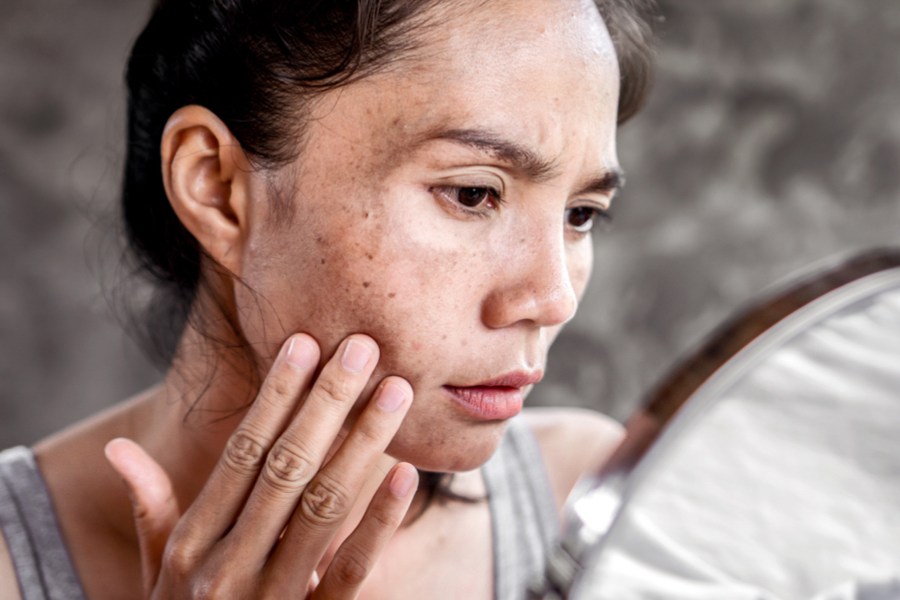
Hyperpigmentation is a common skin condition. It is characterized by patches of skin that become darker than the surrounding areas due to excess melanin production. These darkened spots can appear in various shades, such as brown, black, gray, red, or pink. The types of hyperpigmentation are as follows: age spots, sun spots, melasma, and post-inflammatory hyperpigmentation (PIH). Hyperpigmentation can be caused by factors such as sun exposure, hormonal changes, certain medications, and skin injuries. While it is not harmful, it can undoubtedly be a cosmetic concern for many people.
Use the Yellow Cream to Neutralize Hyperpigmentation:
For addressing hyperpigmentation with the palette, the yellow cream is your go-to choice. Yellow correctors are excellent for neutralizing dark spots, age spots, and uneven skin tone caused by hyperpigmentation. To use it effectively, apply a small amount of the yellow corrector to the areas with hyperpigmentation using a brush, sponge, or your fingertips. Then, blend it gently into the skin until the dark spots are neutralized.
Redness:
Rosacea:
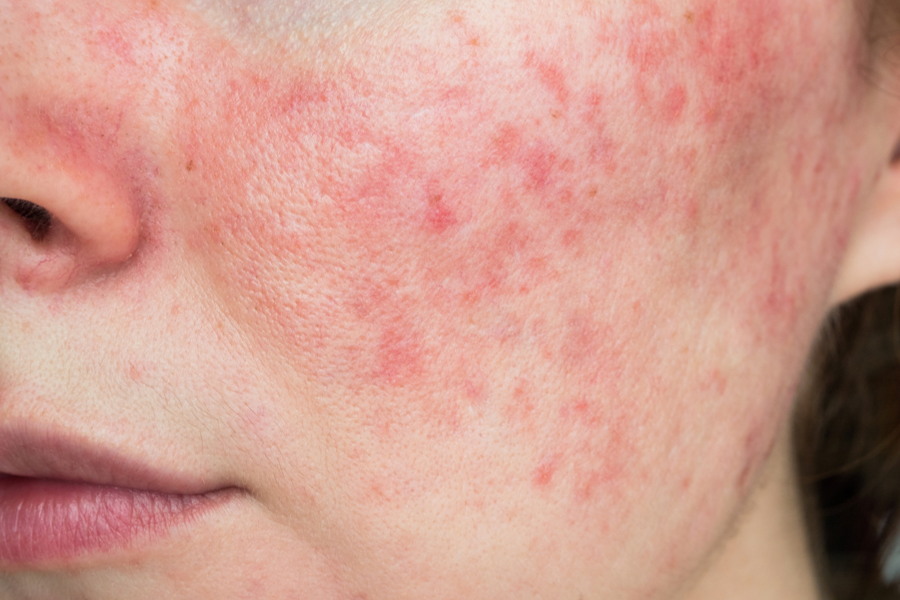
Rosacea is a chronic inflammatory skin condition that primarily affects the central face, causing persistent redness, visible blood vessels, and sometimes small, pus-filled bumps. It often begins between the e ages of 30 and 60 and is more common in fair-skinned individuals. While the exact cause of rosacea is unknown, it’s believed to be a condition of genetic and environmental factors. Common triggers include sun exposure, hot drinks, spicy foods, alcohol, and emotional stress. Although there is no cure for rosacea, its symptoms can be managed with medical treatments and lifestyle changes.
Acne:
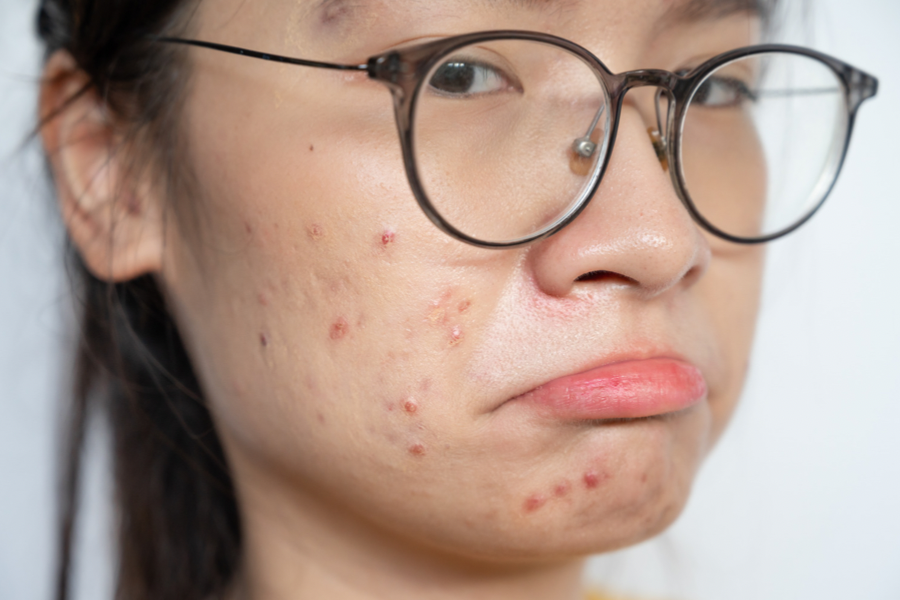
Acne is a common skin condition when hair follicles under the skin become clogged with oil (sebum) and dead skin cells. This clogging leads to various blemishes, including whiteheads, blackheads, pimples, and sometimes cysts. Acne most commonly appears on the face, forehead, chest, upper back, and shoulders. While it is most prevalent among teenagers, for hormonal reasons, it can affect people of all ages. Factors such as hormonal changes, certain medications, diet, and stress can contribute to the development of acne. Although acne is not a serious health threat, it can cause emotional distress and, in severe cases, lead to scarring.
Sunburn:
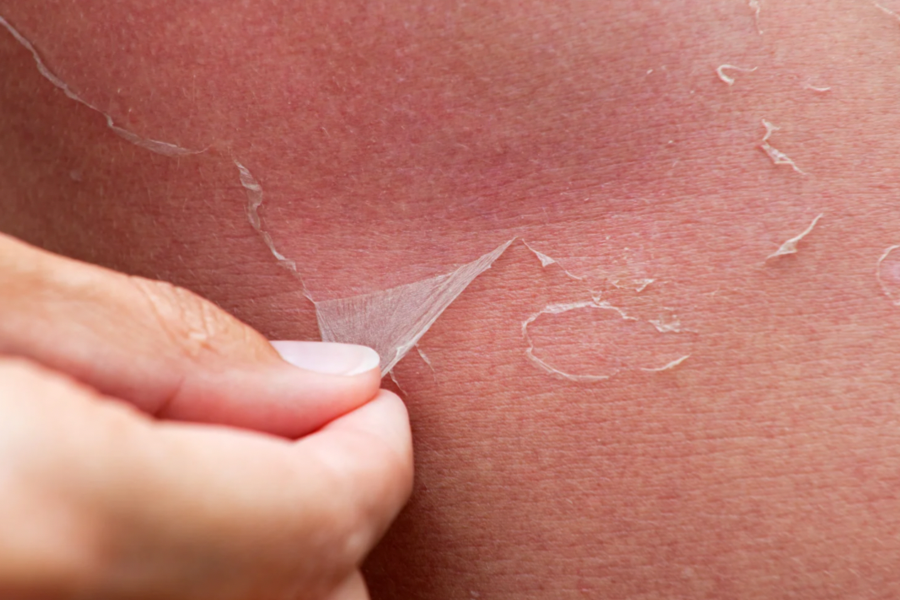
A sunburn is a form of radiation burn that occurs when the skin is overexposed to ultraviolet (UV) radiation, typically from the sun. This overexposure damages the skin cells, leading to symptoms such as redness, pain, swelling, and sometimes blisters. Sunburned skin often feels hot to the touch and can be tender or itchy. In severe cases, sunburn can cause headaches, fever, nausea, and fatigue. It’s important to protect your skin from UV radiation by using sunscreen, wearing protective clothing and avoiding prolonged sun exposure.
Use the Green Cream to Neutralize Redness:
To address redness with the Stila Color Correcting Palette, the green cream corrector is your best ally. Green correctors are specifically designed to neutralize redness, thus making them ideal for correcting the redness caused by rosacea, acne, and sunburns. Apply a small amount of the green corrector to the affected area using a brush, sponge, or your fingertips. Gently blend it into the skin until the redness is neutralized.
My Personal Experience with the Stila Color Correcting Palette
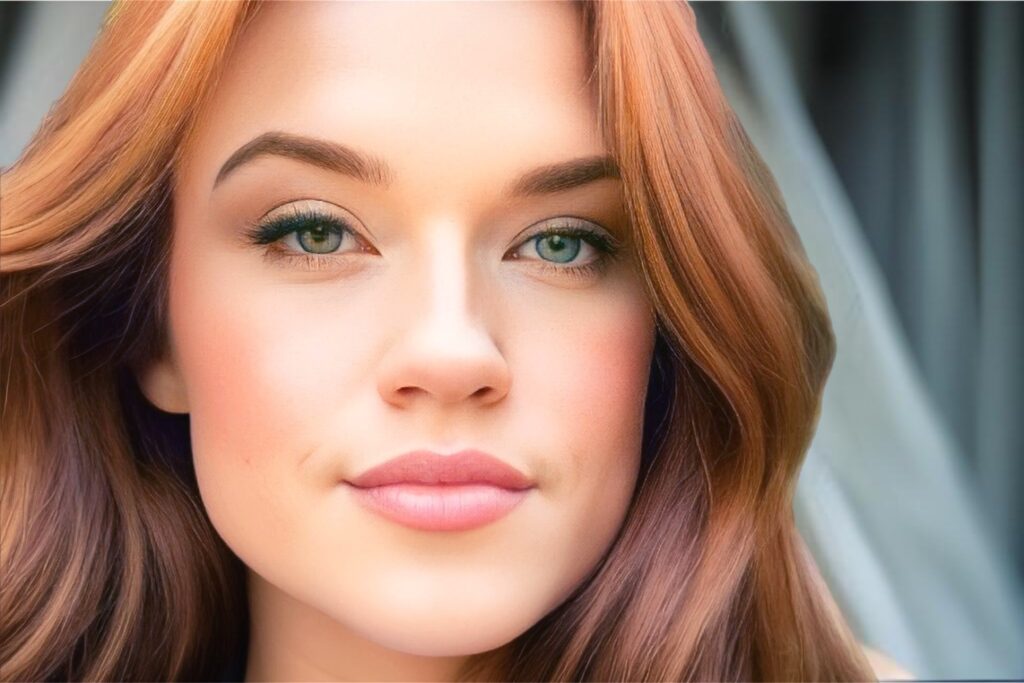
This palette helps me with various skin concerns like acne scars and dark circles. Equally important, this palette helps me conceal a new concern I have been dealing with as of late, called melasma. It’s also effective for issues such as hyperpigmentation, blemishes, redness, visible veins, and dull skin. As stated on Sephora’s website: “Stila’s Correct and Perfect All-in-One Color Correcting Palette is the only one-stop shop for ALL complexions and ALL color correcting concerns.” How amazing is that?
The Stila Color Correcting Palette Works for All Skin Types and Skin Tones
As An Individual with Fair Skin:
Regarding concerns I’ve seen in multiple reviews during my research on this product, many have questioned its effectiveness on fair skin. As someone with fair skin, I can assure you, it works wonders. The secret is to apply it sparingly beneath your foundation and concealer for flawless blending. Also, stay away from the orange cream, unless you’re covering veins or tattoos, as it’s meant to cover darker areas. However, don’t take my word alone; the graphic on the back of the product (akin to my palette graphic above) explicitly references fair skin. So, there ya go, do-do’s.
As stated above. I found this review on Ulta’s Stila Color Correcting Palette listing. Though it does say the name of the person who wrote this review on Ulta’s website, I have decided to withhold this information on my site. In light of her less-than-favorable product review, she may have misinterpreted the instructions. I can see how it might be somewhat confusing initially. The instructions clearly state that the orange cream is designed to conceal veins. Yet, for fair-skinned individuals with visible veins under their eyes, the orange cream is not the appropriate solution.
Alternatively, the peach cream is designed for the under-eye area, catering to those with fair to medium skin tones. For individuals with fair skin, like myself, it’s best to steer clear of using the orange cream on the face, as it tends to not blend seamlessly. However, there’s no need to worry about wastage; the cream can be effectively utilized on other body parts to cover tattoos or prominent veins.
Tips for Application
1. Prep Your Skin:
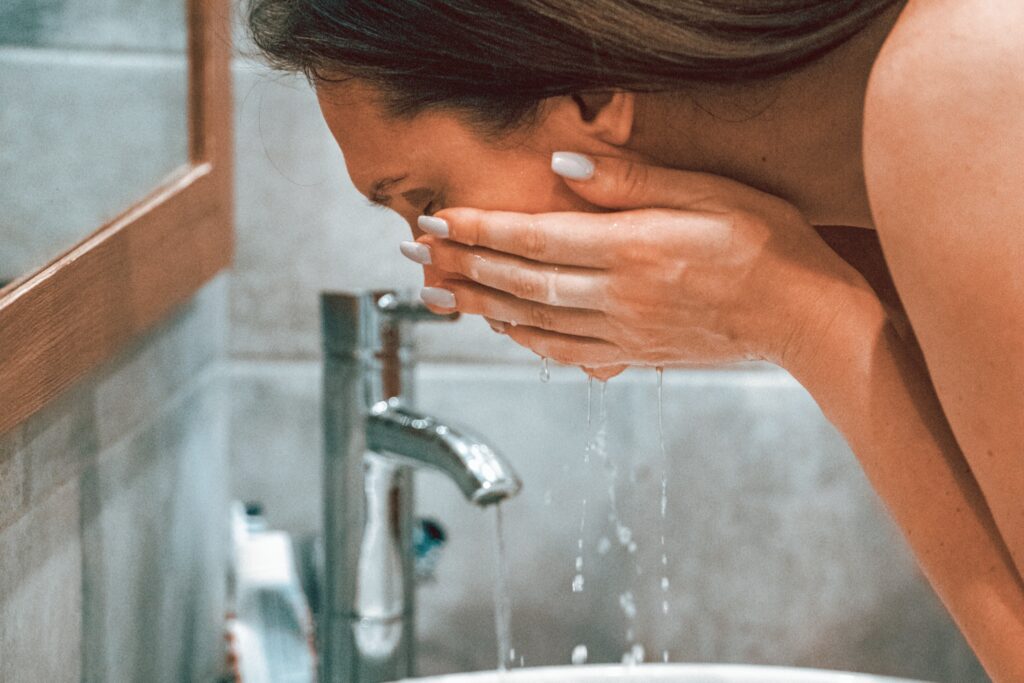
- Cleanse: Start with a fresh, clean face (aka the secret to perfecting your makeup game).
- Moisturize: Apply a lightweight moisturizer to ensure a smooth application.
- Prime: Use a primer to create an even base for your makeup. Check out my blog post on my favorite primer, here.
2. Order of Application (Following Prep):
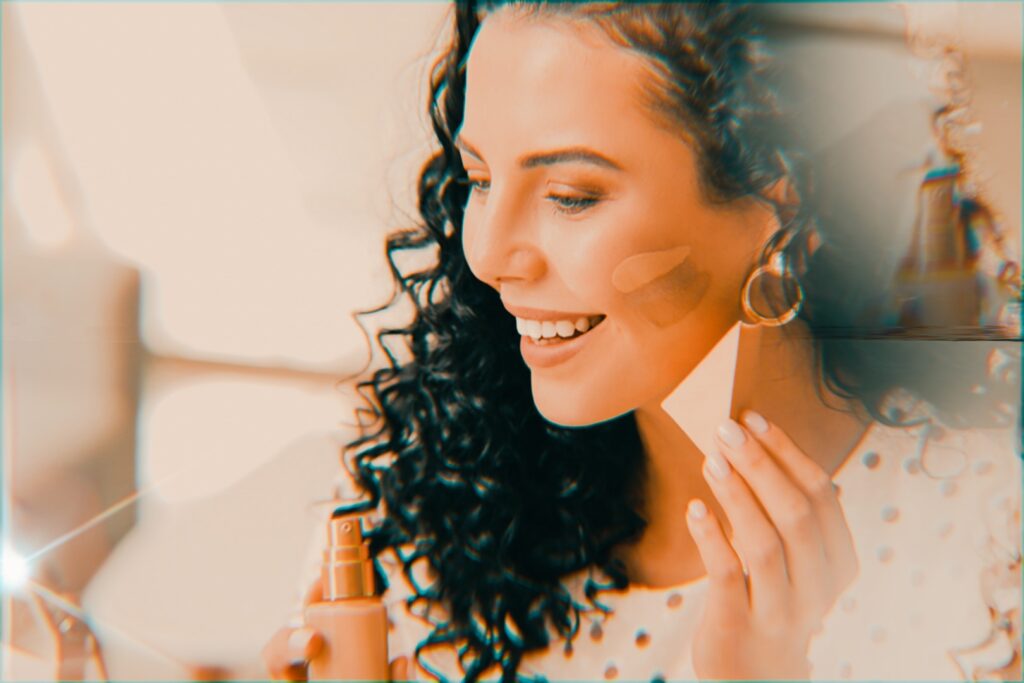
- Correct First: Always apply the color correctors to the target areas before your foundation!
- Foundation: After correcting, use your regular foundation or BB cream to even out your skin tone. I’ve got you covered (pun intended), I have blog posts on my favorite liquid foundation, pressed powder foundation, and loose powder foundation. However, I would stick with a liquid or cream formula when it comes to what works best with this particular product! *A blog post on my favorite cream foundation is in the works!
- Concealer: I would highly recommend applying a concealer over your foundation, as it provides more product to blend the Stila Color Correcting Palette in. Check out my blog post on my favorite concealer: Unlock Your Concealed Weapon: Born This Way Super Coverage Concealer.
3. Application Tricks:

4. Practice Patience:
- Use Sparingly: Apply a small amount of product to the area needing correction. Remember, a little goes a long way with this product. Overdo it and you’ll end up with a cakey look that even a clown would envy. But let’s not talk about clowns because we all know they are downright creepy. That is, unless you’re into that sort of thing.
- Blend Well: Use a clean fingertip, a makeup brush, or a sponge to blend the product into your skin. (*Pro tip: using a clean fingertip is the best way to achieve blending the product into your skin). When using application methods other than your *clean* fingers, patting motions work best to avoid moving the product around too much!
- Layering: If more coverage is needed, apply in thin layers rather than one thick layer.
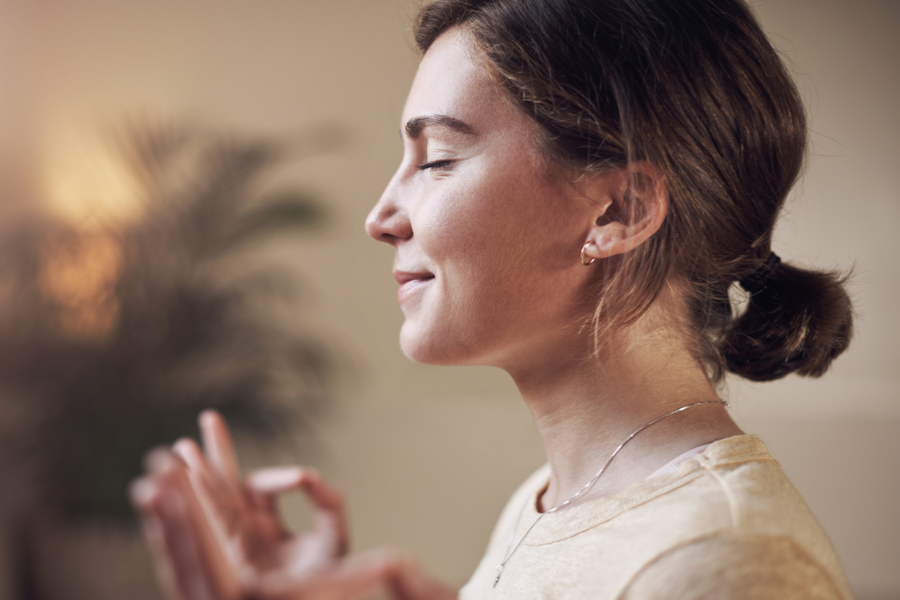
It’s all trial and error when first experimenting with this product. As a result, experimentation is key. Consider trying it when you don’t have any plans or in the morning before your shower. Please remember to be patient with yourself as it may take a few tries to perfect your technique. Don’t be afraid to try different combinations and application methods until you achieve your desired results!
Stila Color Correcting Palette Key Ingredients
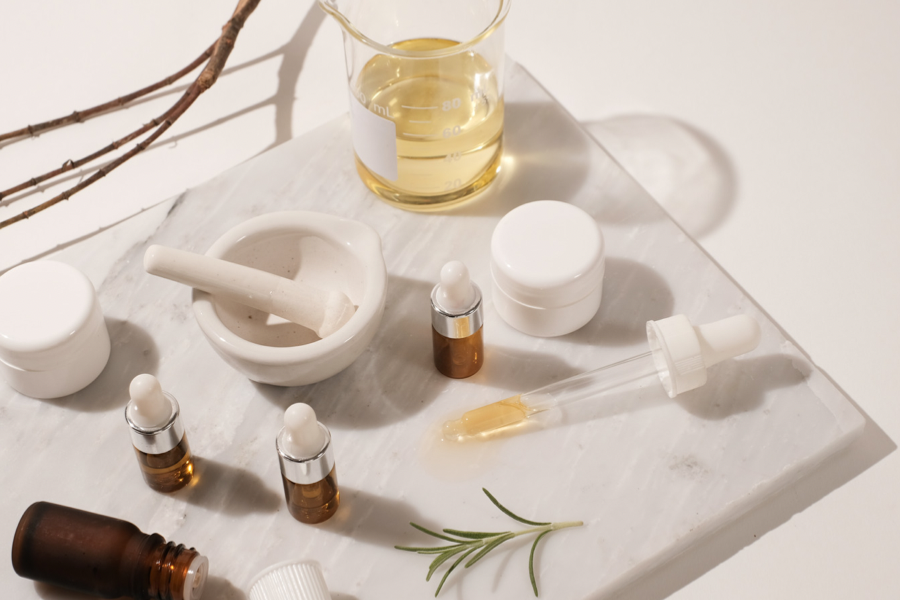
Knowledge is power. I believe we must be informed about the ingredients in the products we use on our skin. Therefore, one of my goals is to simplify this for you by crafting captivating blog posts about these boring and foreign-sounding ingredients. Furthermore, I aim to highlight the key ingredients in each product review. You can click on any ingredient highlighted in pink to read the related blog post. Listed below are the key ingredients of this product.
Setting Powders:
- Talc
- Lauroyl Lysine
- Zinc Stearate
- Polymethyl Methacrylate
- Nylon-12
- Silica
- Phenoxyethanol
- Mica
Color Correcting Creams:
- Caprylic/Capric Triglyceride
- Octyldodecanol
- Euphorbia Cerifera Wax
- Copernicia Cerifera Wax
- Jojoba Esters
- Dimethicone
- Kaolin
- Polyethylene
Conclusion
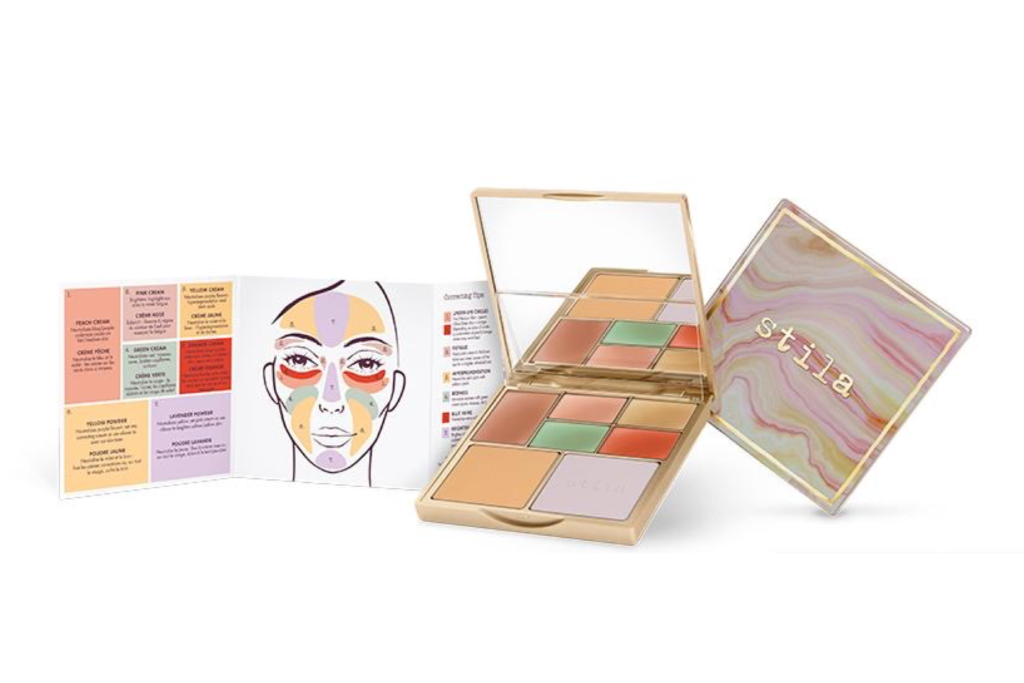
In conclusion, the Stila Color Correcting Palette has become essential in my beauty routine. I certainly hope that after reading this post, you’ll have a better idea why! As someone with skin concerns, its ability to address all of those concerns makes it a standout product in my collection. Indeed, if you’re looking for a versatile palette that delivers on its promises, this is the one. So, why not give it a shot? It may just become your holy grail of beauty products, too.
